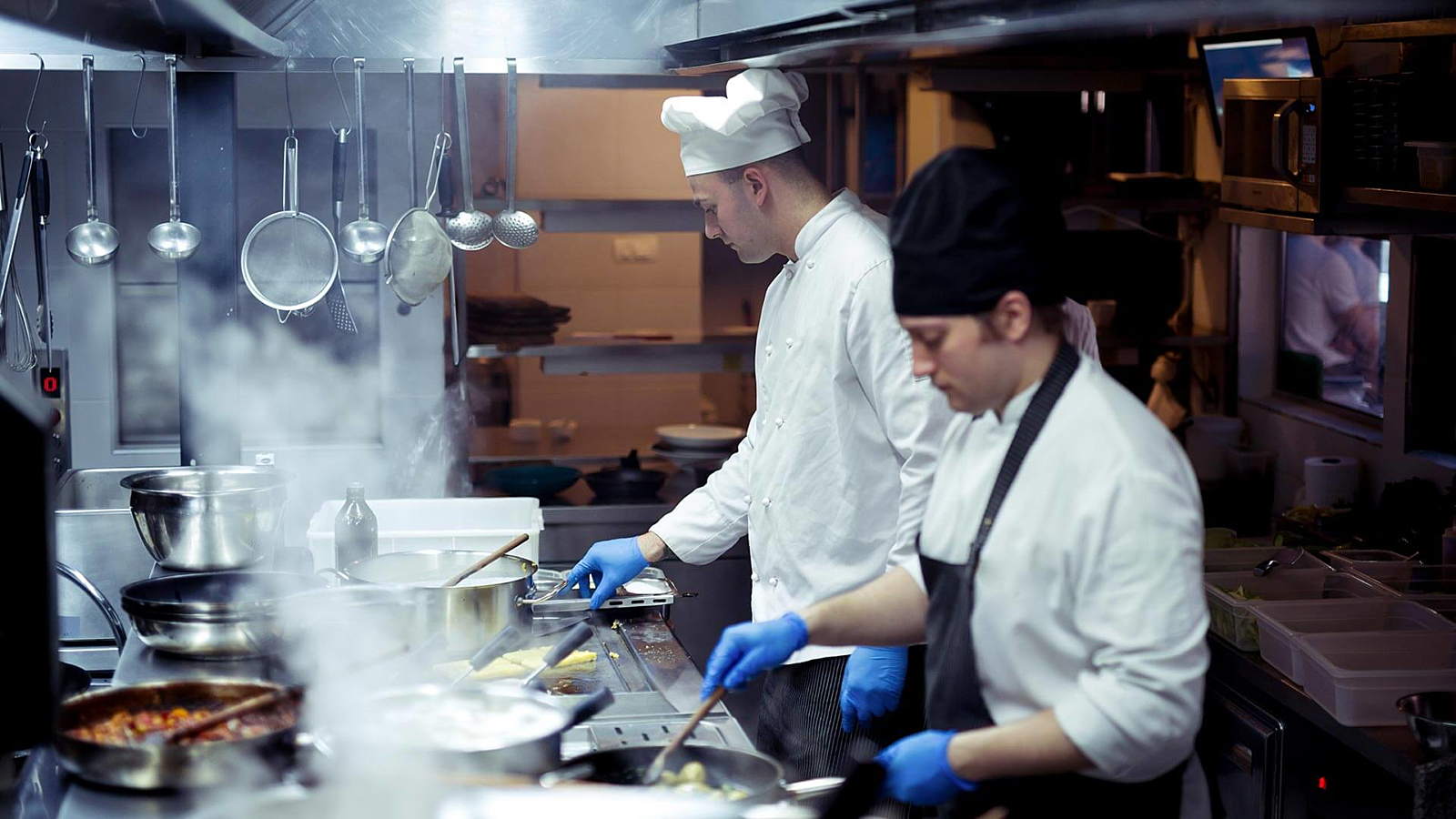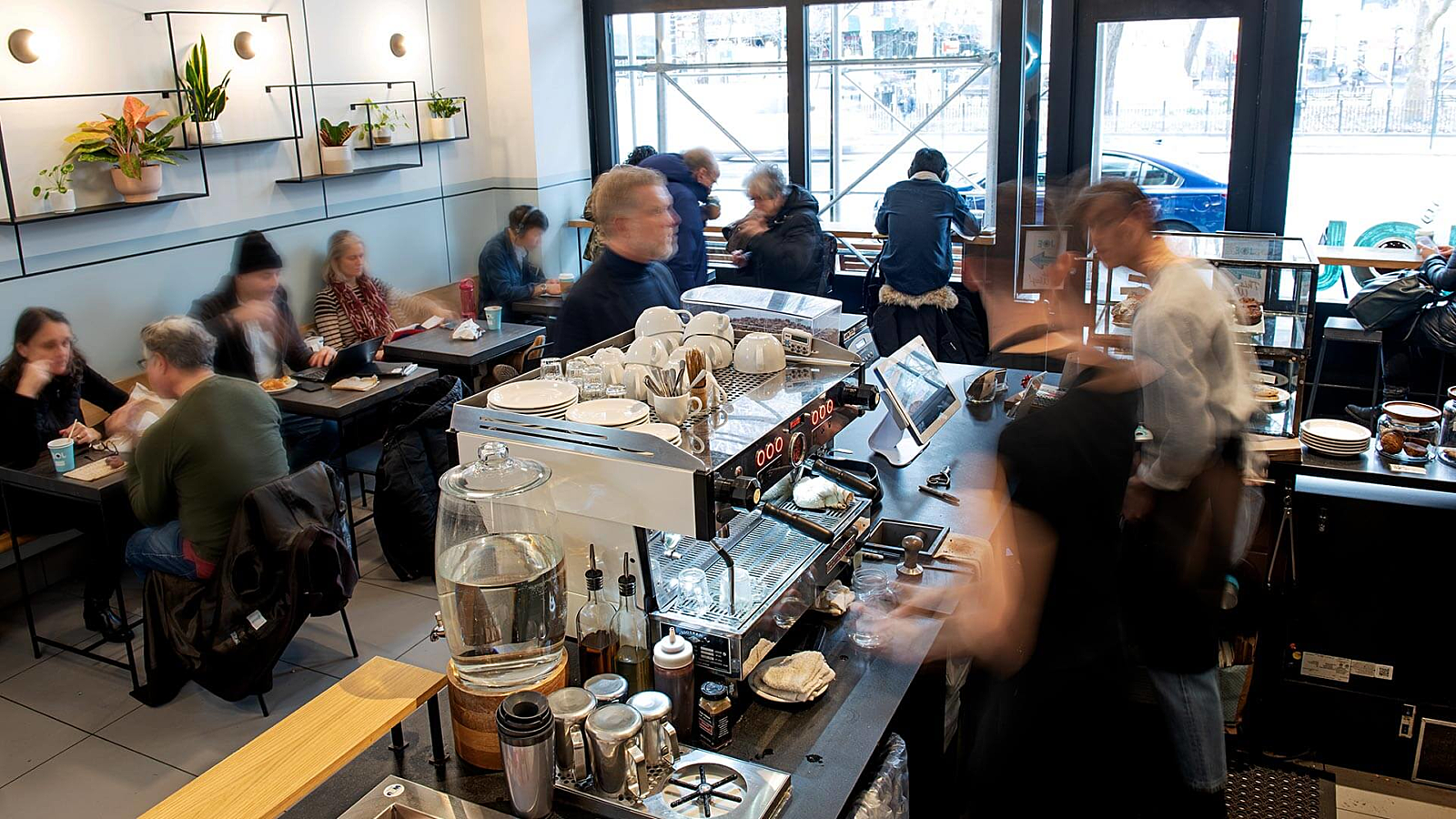
How to Fix Tension in Your Restaurant Team
Four ways to create a culture of communication and mutual respect so interpersonal problems don’t become restaurant problems

Liz Schroeter-CourtneyAuthor
Every great restaurant team experiences tension. The pace of service in a busy restaurant can lead to interactions that are curt — to say the least — but larger issues can arise as well. Are you noticing your restaurant team is arguing? Is your employee turnover rate going up? Are you sensing a general lack of respect on the team?
It's important to address these restaurant issues head-on and make structural changes if needed so that your team can thrive, because a restaurant won't succeed if its staff is unhappy.
Restaurant Problems: Why Your Staff is Unsatisfied
Effective teams must operate on the basis of mutual respect, so if you want to stop interpersonal tensions from igniting real problems for your restaurant, start by considering your own role in causing restaurant staff problems, or at least allowing them to flourish.
Reflect on your management style and your restaurant’s working environment by asking questions like:
Do my employees feel safe at work? Do they feel heard?
Do I show appreciation for my restaurant team, often, in ways both big and small?
Do I find myself yelling at people?
Do I enforce a strict hierarchy, or do I step in and bus tables or wash dishes when we're short-staffed?
Does my staff get paid on time?
Do I offer any benefits or opportunities for growth? Is there a clear protocol for time off?
Often, a team's issues can stem from individual employees' dissatisfaction with their jobs. Creating a good company culture is the best way to prevent issues with your team's dynamic.
We’ve identified four of the biggest restaurant issues affecting workplace happiness and staff retention across the country, as well as these tried and true ways to fix restaurant problems:
Actively avoiding mixed messages and communication errors
Bridging divides to build trust
Having clearly defined job roles and responsibilities
Hiring for personality, not just skills
By fostering a positive culture rooted in communication and mutual respect, you likewise breed loyalty, camaraderie, and a stronger team mentality. Let’s take a closer look at how to identify and solve problems in your restaurant kitchen, behind the bar, and throughout the front of house.
Restaurant Problem #1: Your Lines of Communication are Broken
Miscommunication, or a total lack of communication, accounts for a large portion of issues that arise within restaurant teams.
Imagine a restaurant with two owners. Owner #1 wants beer poured for the guest at the table. Owner #2 doesn't like that it takes longer, so they tell the team they can provide a bottle or can with an empty glass. The result? Owner #1 feels ignored and undermined, and Owner #2 has ensured inconsistent service and a laissez-faire attitude from his waitstaff.
Some of the most damaging communication issues come from high up in organizations where there isn’t alignment around who is calling the shots and when. Avoid the age old “too many cooks in the kitchen” scenario by keeping your restaurant’s management team updated and aligned on all issues and policies to make sure you're presenting the same set of instructions across the board. Mixed messages from management also contribute to team turnover. The last thing any employee wants is to be confused about the restaurant's policies and standards.
Other times, communication issues are as simple as someone not speaking loudly or listening well enough during the rush of service. A line cook calls out to a prep cook "Hey, we need some onions!" and the prep cook, in the middle of two other tasks and half a kitchen away, hears "onion" and starts slicing green onion. Three crucial minutes later, the line cook is presented with the wrong ingredient and blows up at the prep cook. Both feel upset, rushed, and disrespected.
Train your employees to confirm requests if they're unclear instead of making assumptions. A two-second confirmation is always faster than having to re-do a task.
Finally, communicating with your team about your vision and dreams for the restaurant shares the spirit of ownership with them, and can make them care more deeply about the restaurant, meaning they'll likely perform better.
Irene Li owner and operator of Mei Mei Street Kitchen, in Boston, MA, is all about open communication. She and her team practice a type of transparent leadership style called open-book management where the business’s financials are shared with the entire restaurant team in a monthly meeting and staff members are encouraged to ask questions and offer suggestions to help the business thrive. Through open-book management, Li also helps her staff learn about how to read a P&L and other ins and outs of running a profitable restaurant business. This open communication helps them expand their restaurant skills beyond cooking, dishwashing and serving while also feeling more engaged in the business itself.
Restaurant Problem #2: There’s a Lack of Trust
The most famous division in the restaurant industry is the front- and back-of-house divide. There’s almost always a discrepancy in pay, with servers bringing home much more money than cooks, and while cooks don’t have to deal with tough customers, servers don’t have to stand in front of a hot stove all night. They work different hours and experience completely different sides of the chaos of service.
There are a few ways to bridge this divide (and others) and prevent them from solidifying into adversarial cliques.
First, family meal can do wonders to build camaraderie. Get the whole restaurant team sitting down together every day, even for 20 minutes, to enjoy a meal between lunch and dinner service. This tradition will help your staff get to know each other as people and will prevent resentment from building over time.
Pre-shift meetings are also a key opportunity for management to bring the front- and back-of-house teams together and open up the floor for discussion of any issues that may be causing tension. Hold time during these meetings for staff members to raise questions, concerns or new ideas. And by inviting all team members to have a say, you can also help break down the divide between management and staff so there’s not an “employer vs. employee” mentality.
Next, consider having a new cook shadow a server for part of a shift, or have a new server do some basic kitchen tasks early in their time in the restaurant. Making your staff walk in the shoes of someone in a totally different role will increase empathy across the team.
Finally, check in with all your staff members regularly, even for just a few minutes every week, to give them a chance to air any grievances. Foster an environment of transparency and honesty across groups — this will increase trust, which is the foundation for a healthy team. Make it clear that you value your employees having each other’s backs.
Restaurant Problem #3: Responsibilities Aren’t Clearly Defined
Even if a staff member has tons of experience working in restaurants, roles and responsibilities vary wildly from restaurant to restaurant. Some line cooks may not know you expect them to dive in and help the dishwasher if they’re in the weeds. Some servers may not know they’re each expected to mop the floor once a week.
When hiring for a new staff member, It’s a smart idea to outline anticipated responsibilities and duties of the role in the job description within your job posting. Here are a few examples of restaurant staff job descriptions you can use:
Server Duties: 20 Waiter and Waitress Duties and Responsibilities
Prep Cook Duties: Real Restaurants Share Their Prep Cook Responsibilities
15 Types of Chefs & Cooks All Restaurateurs Should Know About
Outlining responsibilities and assigning them clearly is one of the best ways to increase accountability on the team, which will reduce finger-pointing and infighting. Also, if everyone knows their roles and the roles of their team members, they’ll know who to turn to for help when things get crazy.
Job Description Template
Write great restaurant job descriptions with this job description template, a customizable Word doc that outlines responsibilities, requirements, and more.

Restaurant Problem #4: You Prioritize Skills Over Culture Fit
If you're only looking at a person's resume and experience when you hire them and you don't consider how their personality will fit on your restaurant team or contribute to your restaurant’s culture, you're setting your team up for trouble.
Building a team of amazing cooks and servers with ten years of experience each does not guarantee smooth sailing. In fact, in Episode 2 of The Garnish, Deena Marlette, GM of Branch Line in Watertown, MA, explained that she decided to hire front-of-house staff with no experience at a new venture. She invested her time in screening candidates thoroughly, making sure they were enthusiastic about the job and the team mentality, and training them well.
Ryan Egozi, Director of Operations at SuViche in Miami, FL does the same, prioritizing hiring for personality over skills. “Instead of trying to instill values in a human being, which is difficult, it's much easier to train somebody who comes in with high moral fortitude and a high level of integrity on how to cut up sushi rolls,” Egozi says. This approach to hiring has helped make their employee turnover rate historically low.
You can always train a person to do a job well and provide them with skills learning resources like Typsy’s courses on hospitality communication to help build on the abilities they already have, but there are many personality traits you simply cannot teach, including a knack for hospitality.
Understanding behavioral dynamics is crucial to running a harmonious team. There are personalities that work well together, while others are like oil and water. Assembling a team is like creating a recipe — you need the right balance of ingredients to make it work.
Managers have long leaned on personality tests or working/learning style tests to better understand their employees, how they operate, their strengths, and opportunities for growth. There are a number of personality tests available, including:
Each of the above tests will help your restaurant’s management better understand how your employees interact with one another, react to situations, process new information, and approach conflict. This, in turn, will open the door to better team development and more intentional hiring practices.
The Bottom Line
In the end, teams are about people, and having the right balance of people on your team is the best thing you can do to create a harmonious work environment.
From there, the onus is on your and your management team to create a culture where expectations are clearly communicated and mutual trust and appreciation is nurtured. Preventing interpersonal restaurant problems and building a successful restaurant team starts with how you set the example.
Is this article helpful?
DISCLAIMER: This information is provided for general informational purposes only, and publication does not constitute an endorsement. Toast does not warrant the accuracy or completeness of any information, text, graphics, links, or other items contained within this content. Toast does not guarantee you will achieve any specific results if you follow any advice herein. It may be advisable for you to consult with a professional such as a lawyer, accountant, or business advisor for advice specific to your situation.
Read More
Subscribe to On the Line
Sign up to get industry intel, advice, tools, and honest takes from real people tackling their restaurants’ greatest challenges.


